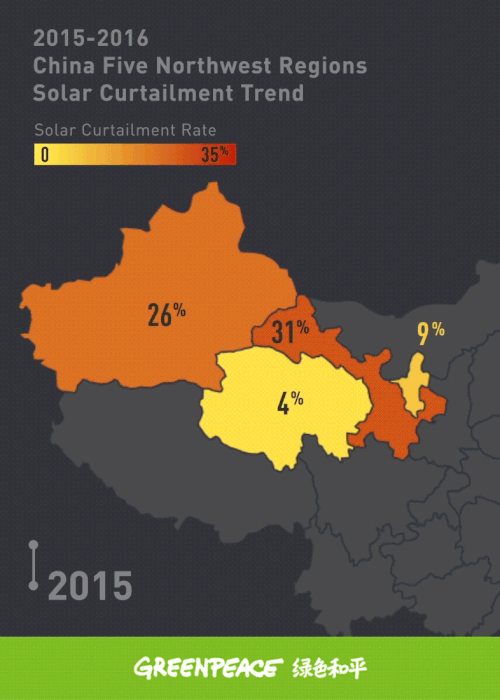Data: China is wasting lots of renewable energy

Wind and solar power generation is skyrocketing in China, but a large – and growing – proportion is going to waste, according to the latest data.
In 2016, China’s wind curtailment rate – the amount of wind power that could have have been generated and used but wasn’t – reached 17%, more than double what it was in 2014.
The amount of wasted wind energy over the past three years is roughly equal to Beijing’s annual electricity consumption.
Meanwhile China’s solar curtailment rose by 50% in 2015 and 2016, with last year’s curtailed power equivalent to the total amount of solar energy generated in France in 2015.
Not only did all this clean energy fail to power homes and cut carbon emissions, it also cost China’s renewable energy industries nearly $5 billion (using today’s exchange rates).
Because renewables rely on the sun shining and the wind blowing, the amount of energy they can produce can varies — from very little to a whole lot.
But sometimes solar panels and wind turbines stop producing power even when they are able to are able to produce more.
Surplus energy is lost — because either the grid isn’t equipped to handle it, there isn’t any way to store it or other types of energy like coal are given priority.
Stat attack
The latest load of curtailment data, courtesy of Greenpeace East Asia, reveals the scale of the problem.
2016 saw nearly 50 wind-powered terawatt-hours lost to curtailment, equivalent to the total generation of Spain’s wind turbine fleet in 2015.
And it’s getting worse in a hurry, with China’s curtailment rate jumping from 8% in 2014 to 17% just two years later, and costing the industry RMB 24.7 billion (= $3.5 billion).
Some provinces are grappling with the curtailment crisis more than others, with 43% of potential wind power in Gansu lost and 38% in Xinjiang wasted.
The solar sectors in these provinces are also hurting, with the curtailment rate reaching 30 and 32% respectively.
The cost of curtailment to the Chinese solar industry was RMB 9.4 billion (more than $1 billion) last year.
What’s actually happening?
There’s no one single cause for all this curtailment, but here are a few reasons:
1. An inflexible power grid designed for big power stations
2. Excessive quota allocated for coal power plants
3. No formal means of punishing curtailment
4. Ill-equipped cross-province transmission
To its credit, the Chinese government is trying to tackle the problem, last year pledging to reduce wind power curtailment to 5% by 2020 as part of its Five Year Plan.
But is it enough?
Read more:
Coal vs Renewables: The battle for China’s grid

